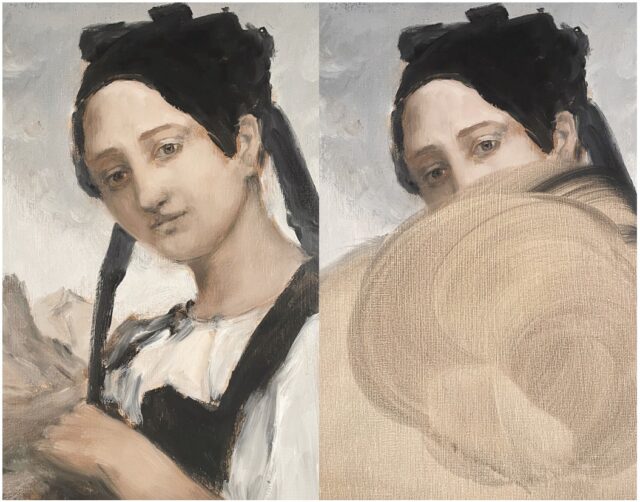On Sept. 5, The Contemporary Jewish Museum will open two new exhibitions: Firmament, the first solo museum exhibition by local artist Nicki Green, and Looted, a multi-media installation that reflects on the history of Polish-owned paintings stolen by the Nazis during World War II.
The Firmament
In the Book of Genesis, the firmament is defined as a thin dome or expanse that divides the earth from the heavens. In-between states are addressed through this division, and this in turn is the jumping-off point for Green to explore the idea of sanctuary. In her work, identity, transformation and the Jewish tradition are represented in an attitude of warmth, welcome and liberation for trans and non-binary bodies.

Clay is a symbol of transformation; the art itself is achieved through shape taking on new forms. The focal point of the exhibition will be a large tent-like structure situated in the center of the gallery, inside and around which several large-scale clay works will be positioned. In the middle of the tent, a large vessel will symbolize a mikvah — the Jewish ritual bath — a space where traditionally queer and trans bodies have been excluded. The “skin” of the tent is a sculpture made by Green’s collaborator, artist Ricki Dwyer. It is woven to reach up to the heavens while also anchoring and sheltering the artworks and bodies in the space. The structure is inspired by the biblical descriptions of the mishkan, or tabernacle — a portable sanctuary constructed by the Jewish people to represent God’s earthly domain while in exile. Under the canopy, multi-headed androgynous figures are presented as angels commingling amongst reinvented ritual objects, including wash basins and ornamental fermentation vessels.
Mobility echoes displacement since the sculptures in the exhibition will be displayed atop their own travel and storage crates. Green’s emphasis on portability throughout this exhibition positions diaspora — the dispersion of a people from their place of origin and across regions — as a core tenet of her lived Jewish experience.

“Green’s work with clay, and her process of shaping it into new forms, is analogous to the shaping and interpretation of religion,” said Senior Curator Heidi Rabben. “Many religions have left a void for gender non-conforming and other marginalized communities. Green demonstrates how new space and a sense of belonging can be intentionally reinvented and created.”
Nicki Green reminds us in Firmament that a spiritual journey is one taken by an individual, and during that journey the greatest transformation takes place: the process of becoming oneself.
Looted
Looted is a reflection on the history of Polish-owned paintings stolen by the Nazis during World War II. Connections between art, memory, power and loss are examined in multi-frame projections in the museum’s Black Box Gallery and lobby.
Looted will feature videos of artists painting reproductions of 59 of the looted artworks documented in Poland’s national database. Just as the final works become realized on camera, the artists wipe away their careful work, an act of erasure that challenges the meaning of authorship, ownership and recovery. Paintings by Raphael, Rembrandt van Rijn, Peter Paul Rubens and others are infinitely recreated and erased by artists and creators Dorota Mytych, Jessica Houston, Marcia Teusink and Tracy Grubbs.

Between 1933 and 1945, approximately one-fifth of all art in Europe and more than five million significant cultural items were seized by the Nazis from museums, churches and private collections. Erasure was a core strategy of the Holocaust. The systematic displacement and murder of Jewish, Romani, queer people, disabled people and other marginalized groups happened while their homes, possessions, businesses and personal belongings were stolen. Alongside these video works, a QR code enables museumgoers to explore the background of each painting or to contribute knowledge to it, including its present-day status, if known.
The struggle to locate and repatriate looted art remains a complex process with international reach. And still, so much of what was lost in war cannot be recovered. The installation offers new ways to process the impact of these stolen works and experience art as a means of resilience. Art and the creation and preservation of cultural history remain a source of hope in the face of violence and tyranny.
Sharon Anderson is an artist and writer in Southern California. She can be reached at mindtheimage.com





